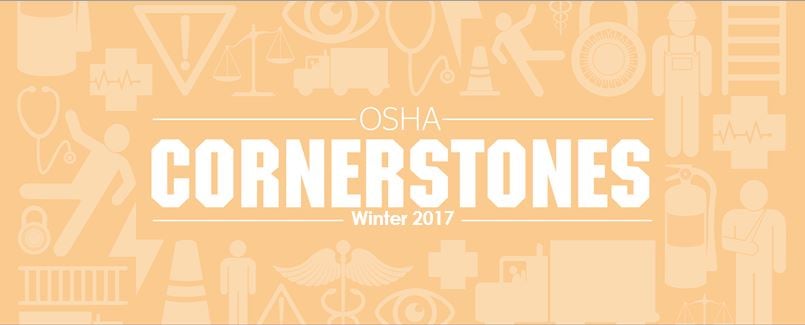
The Virginia Graeme Baker Pool and Spa Safety Act addresses dangers related to pool and spa drains, which can cause severe injury or death by trapping swimmers under the water when blocked. The Act is designed to improve pool and spa safety through new federal requirements for drain covers and anti-entrapment systems as well as by establishing educational programs.
Federal Requirements
The Act contains the following federal standards for swimming pool and spa drain covers:
Your business should follow all pool and spa safety requirements to lower risk.
- All covers manufactured, distributed or sold in the United States must conform to the specified entrapment protection standards.
- All must be equipped with anti-entrapment devices or systems that comply with the same federal standards.
- Each public pool and spa in the country with a single main drain (other than an unblockable drain) must be equipped with at least one device or system designed to prevent entrapment, such as a safety vacuum release system, suction limiting vent system or gravity drainage system, that meets appropriate performance standards.
The requirements contained in the act are intended to be minimum standards; many states have more rigorous safety rules. Violations of the act’s requirements will be treated as violations of the Consumer Product Safety Act.
State Swimming Pool Safety Grant Program
A grant program exists that provides financial assistance to states that have minimum safety requirements for pools and spas that meet the standards contained in the Act. The state statute must require pool and spa owners to:
- Enclose all outdoor, residential pools and spas with barriers to prevent small children from gaining unsupervised access to the area
- Equip all pools and spas with anti-entrapment devices
- Equip all pools and spas built after Dec. 19, 2008 with more than one drain, one or more unblockable drains, or no main drain with anti-entrapment devices
- Equip every swimming pool and spa that has a main drain with a drain cover that meets standards
In addition to imposing these safety requirements, the state law must require periodic notification to owners about compliance with the entrapment protection standards. States can use the grants for the following purposes:
- Hiring and training enforcement personnel for implementation and enforcement of the state laws
- Educating pool construction, installation and service companies about the safety standards
- Educating pool owners, pool operators and other members of the public about the safety standards
Education Program
The act also established an education program to inform the public of methods to prevent drowning and entrapment in swimming pools and spas. The educational materials are designed for pool owners and operators to promote safety.
Please contact Scurich Insurance at (831) 661-5697 with any questions regarding risks and liabilities associated with your business’ pool or spa.
Read more

Even though farm machinery manufacturers try to ensure that their products are safe by equipping them with safety guards, agricultural work presents many hazards. Many times, workers suffer injuries because of human error from taking a shortcut, ignoring warning signs, not paying attention or not following safety rules.
Here are some of the most common farm machinery hazards, as well as several safety recommendations to reduce your risk of injury:
Shear Points and Cutting Points
- Shear points occur when the edges of two objects move close together and can cut soft material (example: auger).
- Cutting points occur when an object moves forcefully and is able to cut (example: sickle blade).
To avoid injuries, remain alert while operating machines with shear and cutting points. Also, advise others to watch out because some cutting machinery can throw objects while in use.
Pinch Points
- Pinch points are created when two rotating objects move closely together, one moving in a circle.
- Hands and feet can get caught in pinch points, or other body parts can get pulled into pinch points when loose clothing becomes entangled in the machine.
To avoid injuries, wear tight-fitting clothing and never reach over or work near rotating parts. Also, identify places where pinch points can occur and avoid these areas.
Wrap Points
- When exposed machine parts rotate, they create wrap points. Loose clothing can get caught in the moving parts, and consequently pull workers into the machine.
To avoid injuries, shield potential wrap points before beginning your work. If wrap points cannot be shielded, paint them a bright color to remind yourself that they are there.
Crush Points
- Crush points occur when objects move toward one another, or one object moves toward a stationary object. Workers can be crushed in between.
Block equipment securely to avoid fatal crushing injuries.
Free-wheeling Parts
- Some equipment with moving parts continues to spin after being shut off.
To avoid injuries, wait until the machinery has completely stopped before touching it. This can take several minutes.
Hydraulic Systems
- When servicing, adjusting or replacing parts on machines with hydraulic systems, workers can face high-pressure blasts of hydraulic oil. This can cause injury and/or burns to the skin.
To avoid injuries, do not inspect hydraulic hoses with your hands because the hydraulic fluids can puncture the skin.
Take time to become familiar with the potential hazards of the machinery you work with and remember to always put safety first!
Read more

In today’s high-tech world, individuals can carry thousands of client files on flash drives in their pockets or purses. People are conducting business on the go and sensitive information is accessible at the click of a button. Managers are using their laptops or tablets through “hot spots” at local coffee shops to access customer databases. Healthcare professionals shopping at supermarkets can get patient files on their smartphones.
If you think of information security breaches primarily in terms of malicious hackers cracking the networks of big corporations from thousands of miles away, think again.
The hacking of such corporate giants as Global Payments, Epsilon, and Sony prove that size and sophistication can’t stop data thieves. However any company that stores customer information in electronic format is vulnerable to cyber privacy liability exposures than can cost megabucks – or even put a firm out of business – which means they need insurance against these risks.
Cyber Liability coverage can protect your business against breaches of privacy from unauthorized access, physical taking, or the mysterious disappearance of confidential information that leads to third-party losses resulting from identity theft.
Depending on your needs, the policy can also provide a variety of coverages, such as:
- Business Interruption
- Cyber Extortion
- Systems and Data Recovery
Other options can cover the cost of contacting those affected by the data breach, computer forensics to analyze the breach, fines and penalties, potential HIPAA (client medical records) exposures, and online activities on your company site.
The development and expansion of Cyber Liability coverage during the past two decades has paralleled the explosive growth of computer technology: Today’s policies are increasingly comprehensive – and inexpensive. Contact us today to discuss your Cyber Liability Insurance needs.
Read more

If an employee is away, restricted or transferred for an extended period of time, follow these guidelines for completing the OSHA 300 form:
- Enter an estimate of the days the employee will be away.
- Begin counting days on the day after the injury occurred or the illness began, and update this number when you know the actual number of days.
- The count of days away from work ends on the date the physician or other licensed health care professional recommends that the employee return to work, whether or not the employee returns earlier or later than that date.
- When there is no physician recommendation, enter the actual number of days the employee is off work.
- Include weekend days, holidays, vacation days or other days off in the number of days recorded if the employee would not have been able to work on those days due to a work-related injury or illness.
- When the number of calendar days away from work or days of job transfer or restriction is greater than 180, enter 180 in the “Total Days Away” column.
- If an employee leaves the company for a reason unrelated to the injury or illness, stop counting days away from work or restriction/job transfer.
- If an employee leaves the company because of the injury or illness, estimate the total number of days away or days of restriction/job transfer and enter that estimate.
- Log the number of days away only on the 300 Log for the year in which the incident occurred.
- If the employee is still away from work because of the injury or illness when you prepare the annual summary, estimate the total number of calendar days you expect the employee to be away from work, use this number to calculate the total for the annual summary and then update the initial log entry later when the day count is known or reaches the 180-day cap.
- Never split the number of days between years and enter two amounts for two different years. Only record each injury or illness once.
Read more

We’ve covered the subject of cyber-security myths before, but all it takes is one critical misunderstanding to harm your network, and we could write a phone book’s worth of content on all the misunderstandings floating around out there.
The Internet’s Safer Now
Some users are under the impression that the Internet is no longer the Wild Wild West that it was in the late nineties and early 00’s. Your computer is probably safer, cyber-security software has gotten more advanced, the general public has gotten smarter about web safety, but the Internet itself is still a Petri dish of viruses and worms that have only had greater opportunities to evolve and proliferate over the last two decades. Viruses don’t disappear from the Internet, they keep floating around out there, finding new means of distribution. The Internet is more dangerous than ever, we’ve just gotten a lot tougher.
Security is the Tech Team’s Job
Put simply: leaving security to the techies on staff is a little bit like leaving a tire to the mechanic when it’s low on air. There are a lot of things that you and the rest of your team can do to make the tech team’s job a little easier, and to keep the ship running a little more smoothly. Brief your people on basic security protocol, and you’ll be far less likely to have your tech guy come to you saying that he needs to hire three more people to handle all this extra workload.
It’s All in the Cloud, so What’s at Risk?
Your definition of valuable data might not quite be the same as a hacker’s. You’re thinking about work-related data and personal information. A hacker is looking for any access they can find. A hacker who gains access to your network might not even have any interest in accessing the encrypted information you keep on the cloud, they might be satisfied with simply using your system as a proxy through which to attack other users. Your system is a gateway, it isn’t just a locker for sensitive data, so keeping it empty won’t keep it safe.
Keeping your network safe isn’t that great of a challenge. All it takes is the right software, a little bit of common sense, and a basic sense of responsibility. Invest a little time, money and effort into your system, and it’s not hard to keep it running clean.
Read more

OSHA frequently introduces or revises safety rules to remain up to date with new technologies and workplace procedures. In early 2017, two new major rules regarding injury and illness reporting will be in effect that all employers and establishments should be aware of.
OSHA’s electronic reporting rule will require some establishments to electronically submit data from their work-related injury records to OSHA. This rule becomes effective on Jan. 1, 2017. Under the new rule, establishments with 250 or more employees must electronically submit data from their OSHA 300, 300A and 301 forms. OSHA will then remove any personally identifiable information (PII) and post the establishment-specific data on its website.
In response to the electronic reporting rule, OSHA released an anti-retaliation rule that went into effect on Dec. 1, 2016. This rule includes two major requirements for employers:
- Employers must inform their employees that they have a right to report work-related injuries and illnesses without any form of retaliation.
- Employer must ensure that “reasonable” procedures are in place for employees to report work-related injuries and illnesses.
Because these two new rules may dramatically change how establishments and employees report injuries and illnesses, it’s important for employers to understand their reporting responsibilities. For more information, contact us today and ask for our two compliance bulletins, “OSHA Issues Final Rule on Electronic Reporting” and “OSHA’s Anti-retaliation Rules to Take Effect Dec. 1, 2016.”
Read more






